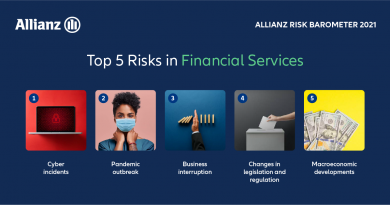Innovation in insurance
Digitisation has taken centre stage in the wake of the outbreak of the COVID-19 pandemic. The insurance industry was not isolated from these winds of change; it saw an increase in digitisation given impetus by increased consumer access to mobile broadband and rapid uptake of smart devices.
In the insurance industry, COVID-19 shifted the balance in our broader economies and forced the idea of agility and strategic change into driving the business that we operate in. Agility and strategic change became the byword for innovation, which necessitated us to do things differently and review our business model in line with evolving consumer preferences.
The insurance industry is in prime position to drive innovation, owing to the impact of the pandemic on its business and operations. The industry cannot afford to operate as it did prior to the outbreak of COVID-19. Increased digitisation, which is precipitated by increased access to the internet, is fundamentally changing consumer preferences.
Many business leaders have been compelled by the outbreak of COVID-19, an increasingly uncertain geopolitical environment and challenging macro-economic environment, to focus on factors that can help them to stay relevant and to ensure sustainability. These factors, coupled with several external considerations such as increased digitisation, greater access to mobile broadband and rapidly growing adoption of smart devices, are threatening the long-term survival of conventional business models, and in some cases, even rendering them obsolete. This is attested by the results of the McKinsey Global Innovation Survey, which found that 80% of executives think their current business models are at risk to be disrupted in the near future.
It is for this reason that innovation is regarded as the magic wand that will help organisations to solve complex business problems, increase productivity, give businesses a competitive advantage and reduce costs and revenue.
It is no wonder then that the OECD Report on Innovation and Growth cited innovation as the leading cause of economic growth over the long term.
Consumer’s paradigm shift
While the changes were unprecedented, the firm foundations for this evolution had already been laid. Over the last couple of years we saw a fundamental change from traditional platforms of engagement between insurers and policy holders to more connectivity across the broader consumer landscape. The environment that we are operating is changing, and inevitably the connectedness of the consumers that we are interacting with is also changing. The idea of how we as an organisation need to be, or could have been successful two years ago, has fundamentally shifted.
For example, now consumers are more concerned with access as opposed to ownership. Similarly, the average workforce is continually evolving. The traditional concept of a fixed employment contract is giving way to a more flexible arrangement where workers provide services on a short-term contract or as freelancers.
These changes have a bearing on consumer cash flow as it means that there is no steady and predictable income each month – these consumers would experience fluctuating monthly income depending on the volume and value of services they have provided. Increased mobility of people in the coming years will negate the need for home ownership as people relocate more regularly between different cities and countries for work purposes.
So how do these changes impact on the insurance industry? How does the insurance industry adapt and innovate in such a way that it remains relevant and responsive to evolving consumer needs?
Impact of digitisation on Hollard Life operations
Mounting fears of transmission and contamination at the height of the COVID-19 pandemic saw a surge in contactless applications and customer interface platforms. Hollard Life was no exception. The insurer decommissioned several brick and mortar branches as it transitioned its operations online.
These changes were a culture shock to many of our customers who have, until now, interacted and transacted with us through human interaction at the branches and the call centre. While these changes were disruptive, they enabled us to significantly improve customer experience as it meant that our services were available to our clients 24 hours a day, seven days a week.
Innovation should be goal orientated, not for innovation’s sake
There is unanimity among different industries that digitisation is the incubator of innovation. However, one of the fundamental views to consider is not what digital can deliver, but rather it should be more about how digital can drive innovation.
While innovation is touted as the lifeline for many industries and organisations, there is surprisingly little quantitative research on the topic which can largely be attributed to inherent difficulty in measuring the concept.
Having said that, Booz & Co. (now Strategy&) 2011 Global Innovation 1000 report found a clear difference in both revenue (11%) and earnings before interest, taxes, depreciation and amortisation (EBITDA) (22%) growth in favour of the more innovative organisations.
 Often, the discussions about innovation are about how we go about digitising processes rather than how we should embrace digitisation not as the product, but more as the enabler to the delivery of services. Digitisation should be the intervention that we put in place to address consumers’ pain points and performance gaps to improve efficiencies. These performance gaps could be related to claim processing, providing feedback, or making the underwriting process less cumbersome.
Often, the discussions about innovation are about how we go about digitising processes rather than how we should embrace digitisation not as the product, but more as the enabler to the delivery of services. Digitisation should be the intervention that we put in place to address consumers’ pain points and performance gaps to improve efficiencies. These performance gaps could be related to claim processing, providing feedback, or making the underwriting process less cumbersome.
Therefore, the approach should be focused on how we can use digitisation to enable us to fix processes.
Understanding customer needs is a crucial component of our ability to innovate properly. Historically, discussions around innovation were informed by the need to do things differently, and not to improve efficiencies or address inadequacies in the system.
In order for innovation to have value, it needs to be done with the customer in mind and should be done in conjunction with the consumer. Having an intimate understanding of consumer needs and innovating together with the consumer allows us to fundamentally shift the idea of execution and delivery of best innovation.
In a nutshell, innovation has to be a ground up process that seeks to improve the consumer experience. It should be a process designed on the ground with the consumers after a thorough assessment of their needs, preferences and input has been taken into consideration. It’s about ultimately letting them design a concept that is fit for purpose, rather than just a tick box on our side as the insurer to support something that we had thought was a problem, but not so much for the consumer.
Equally important, innovation should be part of the day-to-day operations and a business’ state of mind. The Accenture 2015 US Innovation Survey gives credence to this conviction: it found that 84% of executives considered their future success to be very or extremely dependent on innovation. Therefore, we believe that innovation should shift from this big lightbulb moment to business as usual.
By Mark Berrington: Head of Strategy & Insights: Hollard Life Solutions




